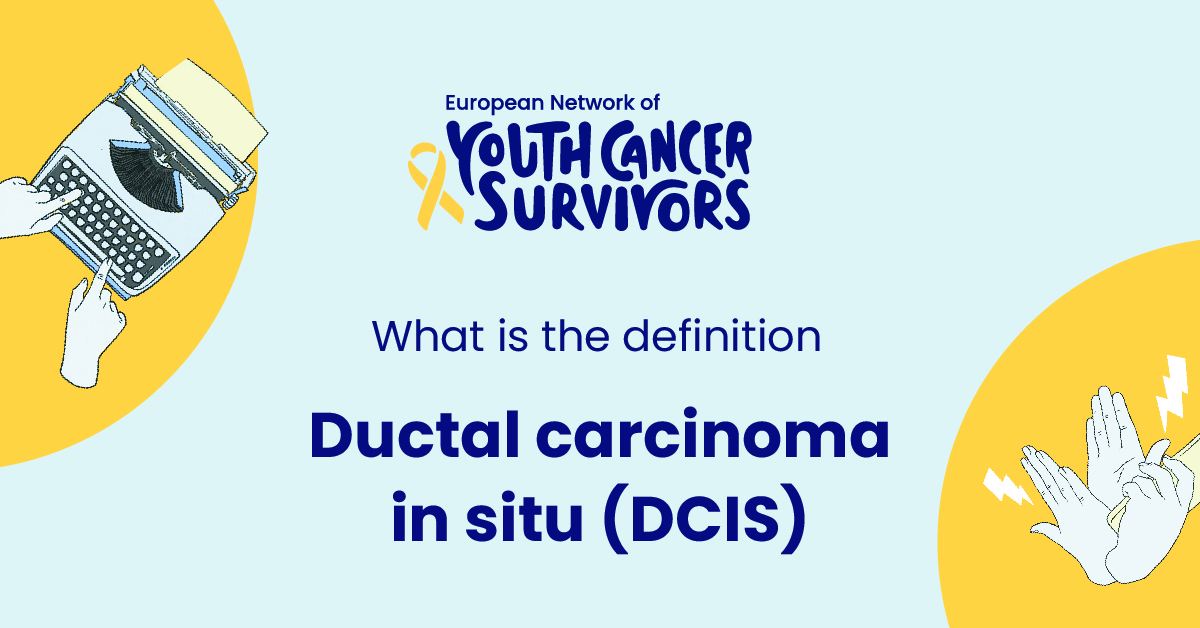
The world of oncology, specifically breast cancer, comprises an array of differing types. Understanding these distinctions is crucial for both awareness and treatment. Among these types, Ductal Carcinoma, a subtype of breast cancer, holds a significant place. A deeper analysis of this entity, particularly Ductal Carcinoma in situ (DCIS), will boost the understanding on the subject.
Brief Overview of Breast Cancer Types
There are several different types of breast cancer. These can be classified based on their origin, namely the ducts or the lobules, the two key parts of the breast. These types range from the fairly common to the extremely rare, and include invasive ductal carcinoma, invasive lobular carcinoma, medullary carcinoma, and Paget disease of the breast.
Ductal Carcinoma as a Subgroup of Breast Cancer
Ductal Carcinoma, as the name suggests, originates from the ducts of the breast, which transport milk from the lobules to the nipple. It is further divided into two, Invasive Ductal Carcinoma (IDC), which spreads to surrounding breast tissues, and Ductal Carcinoma in Situ (DCIS) which does not invade beyond the ductal wall.
Significance of Understanding Ductal Carcinoma in Situ (DCIS)
Being privy to DCIS is pivotal because it is the most common form of non-invasive breast cancer. DCIS is often deemed as a precursor to invasive breast cancer and thereby, early detection and proper understanding can potentially prevent its progression.
Understanding Ductal Carcinoma in Situ (DCIS)
Definition of Ductal Carcinoma in Situ (DCIS)
Ductal Carcinoma in Situ (DCIS) refers to the condition where abnormal cells are found exclusively within the lining of the breast ducts, and have not spread to nearby tissues. Being a non-invasive type, it is considered an early form of breast cancer.
The Relevance of the Term “in Situ”
The term “in situ” comes from Latin, meaning “in its place”. In medical oncology, it’s used to describe cancer in which abnormal cells have not crossed the boundaries of their origin. In context of DCIS, it means the abnormal cells remain contained within the ducts.
Anatomical perspective: Where does DCIS occur?
DCIS occurs in the milk ducts of the breast. These are the pathways that bring milk from the lobules, where it’s made, to the nipple. The carcinoma is termed ‘in situ’ because the cancerous cells remain ‘in place’, that is, within the ducts, without spreading to nearby tissue.
Get to know us better
If you are reading this, you are in the right place – we do not care who you are and what you do, press the button and follow discussions live

Epidemiology and Risk Factors of Ductal Carcinoma in Situ (DCIS)
Prevalence of DCIS
The prevalence of DCIS has seen a significant rise over the past few decades, largely due to the increased usage of mammographic screening. It accounts for approximately 20-25% of all breast cancer cases diagnosed.
General Risk Factors
General risk factors for breast cancer, inclusive of DCIS, range from age, gender, family history and genetics, to lifestyle factors such as alcohol consumption, obesity, and lack of physical activity.
Specific Risk Factors for DCIS
For DCIS, in particular, hormone replacement therapy, especially combined estrogen-progestin therapy, and past radiation therapy to the chest area are considered influential risk factors.
Clinical Manifestations and Diagnosis of DCIS
Signs and Symptoms
Often, DCIS does not present with any evident symptoms. Occasionally, a lump or bloody nipple discharge might be noticed. Mostly, DCIS is picked up during routine mammogram screenings even before any symptoms appear.
Diagnosis Process:Mammography and Biopsy
DCIS is usually diagnosed during a routine mammogram which often highlights microcalcifications, small deposits of calcium that may indicate the presence of DCIS. After the mammogram, if DCIS is suspected, a biopsy sampling the suspicious tissue is performed to confirm the diagnosis by analysing the cells for cancerous changes.
Staging and Grading of DCIS
DCIS is classified according to the amount of cell growth and variation from normal cells. Known as grading, DCIS can fall into three categories: low, intermediate, or high grade. While it is not typically staged (as it is non-invasive), its size, growth rate, and cell characteristics guide treatment decisions.
Treatment Modalities for Ductal Carcinoma in Situ (DCIS)
Overview of Treatment Options
The primary treatments for DCIS include surgery—either a lumpectomy or mastectomy—often combined with radiation therapy or hormone therapy. These usually depend on the grade, size, and location of the DCIS, as well as patient preferences and overall health status.
Surgical Procedures: Lumpectomy and Mastectomy
Lumpectomy involves removing the DCIS and a small area of normal tissue around it, whereas mastectomy entails the removal of the entire breast containing DCIS. A sentinel lymph node biopsy may also be done to see if the cancer has spread to the lymph nodes.
Radiation Therapy
Following a lumpectomy, radiation therapy is often used to eliminate any remaining DCIS cells. It reduces the risk of recurrence, but it comes with a potential set of side effects including skin changes and fatigue.
Hormone Therapy
If the DCIS cells are found to be hormone-receptor-positive (which most are), hormone therapy using drugs like Tamoxifen might be advised to block the effects of hormones on the breast cancer cells. This helps in preventing the recurrence of DCIS or the development of invasive breast cancers.
The Prognosis and Future of DCIS Management
Survival Rates and Overall Prognosis
The survival rate of DCIS is extremely high due to its non-invasive nature, and timely and effective treatments. Nearly all patients with DCIS can expect to live a normal life span.
Clinical Trials and Advancements in Treatment
Clinical trials are continuously investigating novel ways to treat DCIS, including the development of new drugs, surgical techniques and more targeted radiation therapies. These aim to improve the benefits of treatment and reduce side-effects.
Post-recovery: Follow-up care and Lifestyle Modifications
Post DCIS treatment, regular follow-up care including mammograms, breast exams, and other tests are crucial to monitor recovery and watch for a recurrence. Embracing a healthier lifestyle such as a balanced diet, regular physical activity and cessation of smoking can markedly help in recovery and prevention of recurrence.
Conclusion
Recap on the Importance of Early Detection
Early detection and understanding of DCIS is pivotal. Timely mammograms and awareness about the symptoms are key to early identification and successful treatment of DCIS, thereby preventing its possible progression to invasive cancer.
Support and Resources for Patients with DCIS
A diagnosis of DCIS, just like any other form of cancer, can be challenging. There are resources available that provide support, including counseling services, online communities, and cancer support groups. Your healthcare provider can provide information on these resources.
Frequently Asked Questions (FAQs):
1. What is the primary difference between Ductal Carcinoma in Situ (DCIS) and Invasive Ductal Carcinoma (IDC)?
The primary difference lies in how far the cancer cells have spread. In DCIS, the cancer cells remain within the ducts, whereas in IDC, the cells have spread beyond the ducts into the surrounding breast tissue.
2. Is Ductal Carcinoma in Situ (DCIS) considered pre-cancer or actual cancer?
DCIS is considered a form of non-invasive or pre-invasive cancer. While the cells are cancerous, they remain contained within the ducts and haven’t yet invaded surrounding tissues.
3. Are there any lifestyle changes that can help prevent DCIS?
While there’s no sure way to prevent DCIS, certain changes like maintaining a healthy weight, regular exercise, limiting alcohol and not smoking can lessen your overall risk of breast cancer.
4. If I have DCIS, does it mean I will definitely develop invasive cancer?
Not necessarily. While DCIS can sometimes progress to invasive cancer, it doesn’t always do so. Timely treatment can often eliminate DCIS and reduce the risk of invasive cancer.
5. How often should I get a mammogram if I’ve been diagnosed with DCIS?
Your healthcare provider will guide you, but typically, you should have a mammogram every six to twelve months after treatment.
6. What are the side effects of treatment for Ductal Carcinoma in Situ (DCIS)?
Side effects vary depending on the treatment. Surgery may cause pain and impact body image. Radiation therapy can cause skin changes, swelling and fatigue. Hormone therapy may lead to menopausal symptoms.

















Comments
Thank you. Comment sent for approval.
Something is wrong, try again later